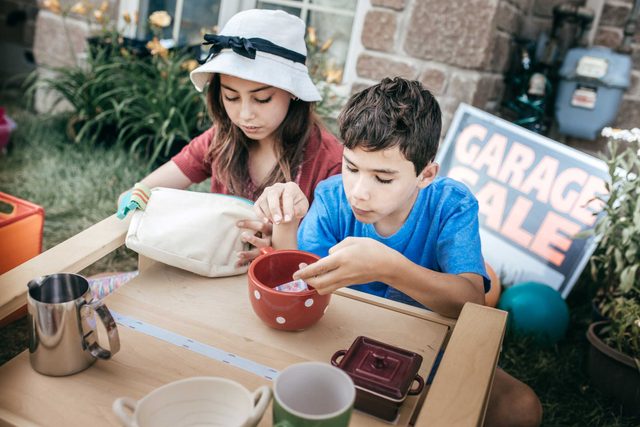
Have a garage sale or donate things ASAP
“Don’t wait until the weekend before you move to host a garage sale,” says Ali Wenzke, moving expert and founder of The Art of Happy Moving. “While you may sell your knickknacks, large furniture items often remain unsold. You don’t want to spend your last week in your city trying to hunt down buyers for your things. Also, many charities require one to two weeks for donation pick-ups.” Joe Dux, project management team leader at Martin CFS, a moving company, agrees: “Getting rid of old or unnecessary clutter will not only make hiring a professional mover less expensive but also gives you a little extra cash and a lot more room for things you actually want. This simple step really tackles a handful of problems.” A good place to start is your closet. Here are the top rules to keep in mind when deciding which clothes to keep or toss.
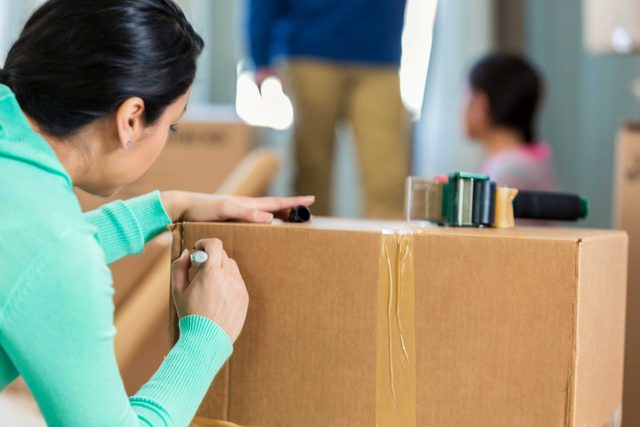
Label everything in excruciating detail
“It’s helpful to label boxes ‘living room’ or ‘kitchen,’ but you’ll also want to know what’s inside the boxes,” says Wenzke. Add an extra label describing what’s inside the box to save yourself time (and sanity) when unpacking. Knowing everything’s place is one of the best packing tips for moving because you won’t have to scramble for your most-used items. If you’re using professional movers, here’s what to look out for so you don’t fall for moving company scams.
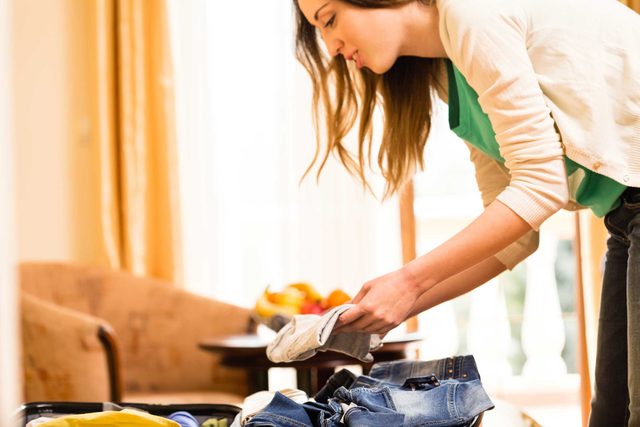
Use clear, plastic containers when moving kids’ toys and clothes
“Inevitably, your child will want to wear his red striped T-shirt to match his best friend’s,” Wenzke says. To save your child—and you—tears, pack their favorite items in easily accessible clear containers.” This will help assure your child that their beloved belongings are indeed going along for the ride. Plus, you’ll be able to easily identify his favorite stuffed animal or book in a pinch.
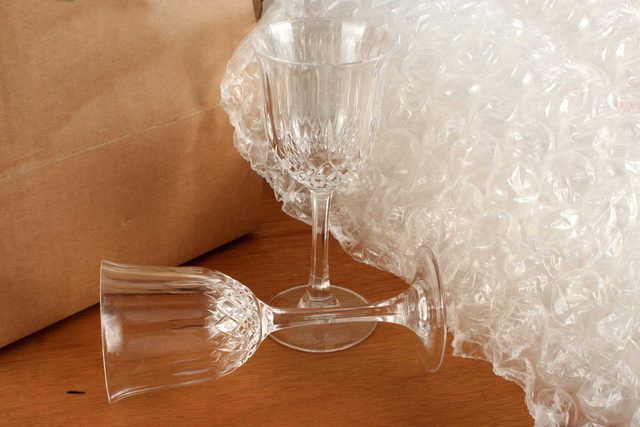
Protect flat, fragile items in this unusual way
“Protect flat, fragile items by placing them in-between mattresses or box springs,” says Dux. He recommends items like mirrors, glass, or picture frames still be wrapped and packed like any other object, “but securing them in the safety of something soft will assure you that your valued item won’t shatter in the moving process.” For all the attention and care it takes to move your fragile items, movers deserve a tip. Here is how much to tip your movers.

Load your heaviest boxes first
“With a big moving truck, weight distribution is important. Place the heaviest objects on the bottom and everything else on top. Not doing so will risk you damaging your other items, and could also tip the moving truck,” says Dux.
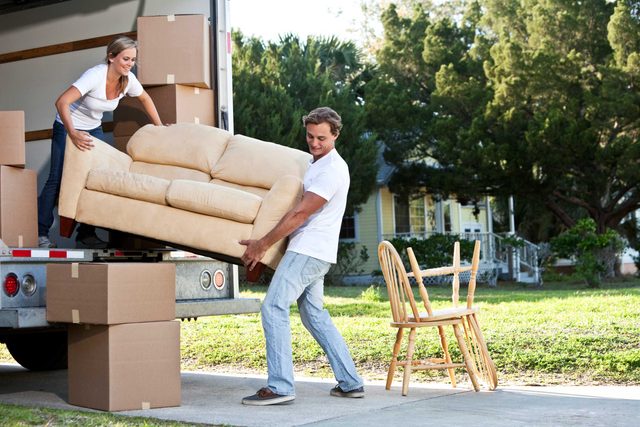
Pack your sofa vertically instead of horizontally
This is one of the best packing tips for moving because you’ll save some significant square footage in the truck, leaving more room for the rest of your belongings. “We recommend placing the couch in the front corner of the truck to help with weight distribution and to give it the most support possible,” suggests Dux.

Taking your fridge? Defrost it ahead of time
If you never thought of doing this before a move, you’re not alone. Max Robinson, an employee at Removal Services Scotland says, “around 75 percent of our customers overlook this entirely.” If you don’t properly defrost your fridge, it will leak all over the vehicle that you’re using for the move, and possibly even over other items.” Robinson says to defrost the fridge for at least 24 hours to ensure minimal leaks.
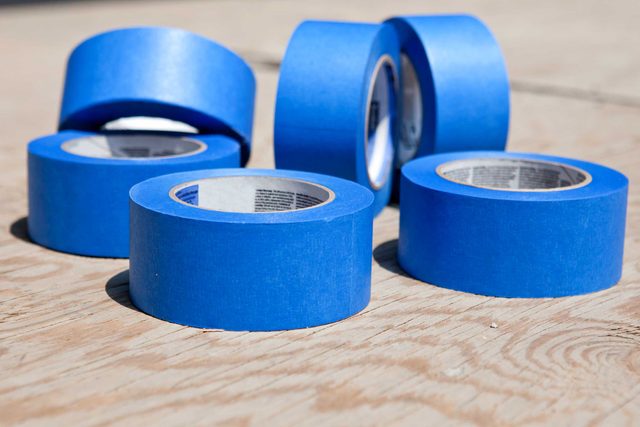
Put masking or painters tape on mirrors and glass
Robinson says taping won’t prevent breaks during transport, “but it will help to absorb shocks and can keep the glass in the frame if a mirror does accidentally smash, keeping the rest of your items safe.” It makes for easier and safer clean-up, too.

Take photos of your electronic set up
Robinson says, “Before unplugging your electronics (television, Wi-Fi router, computer), take a photo of how the cables are plugged in. When it comes to setting up your electronics in your new place, you’ll be able to refer to the photos rather than having to use the instruction manual (which, let’s be honest, most people tend to lose).” While you’re taking photos, why not do a photo inventory of the rest of your stuff before you move? Here are 16 other things all smart homeowners should be doing.
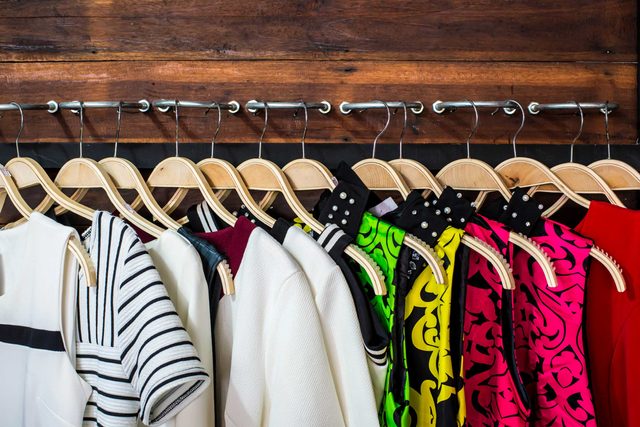
Pack clothing on hangers and put in a bag
Packing up your closet, especially the hung clothes, can be a chore. Just think of all the skirts, blazers, and dresses you have to remove from their hangers then re-hang when you get to your new place. To make things easier, follow one of Robinson’s best packing tips for moving: “Simply take the clothes off the rack still on the hanger and place them in a bag with the hanger sticking out of the end. Once you’ve packed as many clothes in the bag as you can, simply tie all the hangers together and pack the bag away.” (Note: You won’t be able to fit as many clothes with hangers in the bag as you could without them.) Once you arrive at your new place, untie the hangers, and hang them on the rod. Done!

Pack a “first night” box
When you arrive at your new property, chances are you’ll be pretty tired, and finding everything you need for your first night could put you over the edge. “For this reason, it can be a good idea to pack a ‘first night’ box that has everything you need in it like pajamas, basic toiletries, and possibly even some ready meals and DVDs,” says Robinson. Get a good night’s rest, and tackle the major unpacking the next day.

Don’t skimp on quality packing boxes
To save money, many people stock up on those old food boxes from the supermarket or reuse boxes from a previous move. According to Ori Siri-Princz, long distance moving manager at Oz Moving & Storage, that’s not the best idea. “Buy quality packing boxes; do not skimp. For items such as wine or cups, there are specialty boxes you can buy that are suited for those particular items and can ultimately prevent damages.” Another smart packing tip for moving: “Don’t make the boxes too heavy in an attempt to save on the number of boxes. Chances are boxes will not be as protective as they should if overstuffed.”
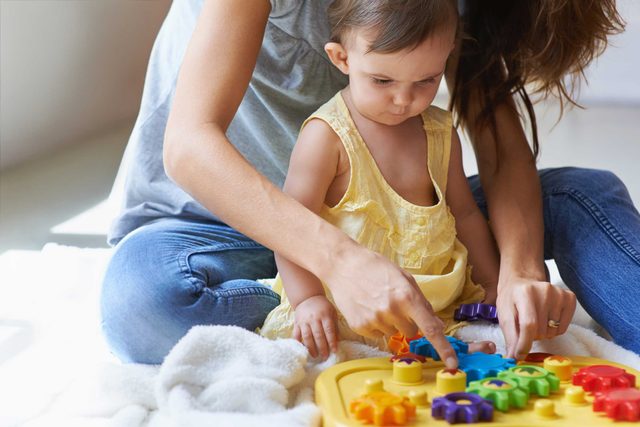
Hire a babysitter for moving day
Most people don’t realize how stressful and distracting packing and moving can be. So, take advantage of these packing tips for moving, especially this one. Siri-Princz suggests, “Hire a babysitter or ask a family member to help watch the kids on the day of the move. It’ll clear out some time for you to deal with the move without having to worry about keeping your children busy.”

Keep your pets safe
“Pets mostly don’t like changes so keeping them safe and stress-free is a good idea for everyone,” says Siri-Princz. She recommends keeping them safely closed in the last room you’ll need to access on the day of the move or sending them to a doggy daycare.
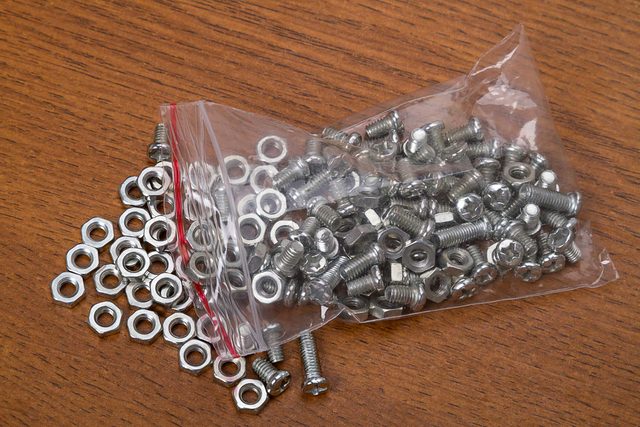
Put screws, tools, and remotes in a sealed plastic bag
“Keep all screws in tagged ziplock bags and in one box. Try to include remote controls and anything you think would make it easier for you when the cable technician arrives,” Siri-Princz says. The same goes for disassembled furniture: Having all the screws and tools in a clearly labeled clear ziplock bag makes life much easier!